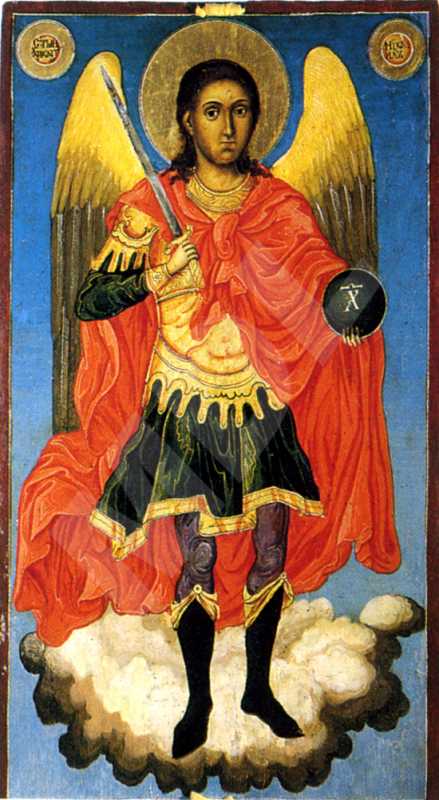St. Archangel Michael
Type:
Icon
Period:
The beginning of the
19 century
Dimiter T. Molerov, born in 1780 in Bansko, son of Toma Vishanov the Moler. One of the best-known painters, a representative of the Bansko school of art, a disciple of his father, influenced by the art of Athos. Author of the murals of the naos in the St Archangels' paraclete in the Rila monastery, the murals in the Church of the Assumption of the Virgin in the Pchelino dependance. In 1840 and 1841 together with his son Simeon Molerov he paints the murals and the sponsors' portraits in St. Nicholas' and St. John of Rila's paracletes in the principal church in the Rila monastery. Among D. Molerov's major achievements in iconography are the following icons: St. Nicholas (1816) from St. Archangel Michael's church in the village of Leshko, Christ All-triumphant with Angels and Cherubim (1833), The Nativity and a Crucifixion from St Elijah the Prophet's church in the village of Usenovo. He has also worked in Belgrade on an invitation by Prince Milosh Obrenovich of Serbia. He died in 1870 in Bansko.
Dimmensions (cm):
59
/ 34
/ 4
Location
Country: Bulgaria
Province: Montana
Town: Berkovitsa
Gallery: Art Gallery
Source
Country: Bulgaria
Other source: Others
Description
A traditional iconographic treatment of the theme. Saint Archangel Michael is portrayed in full length, in full armour, with a red mantle on the shoulders. He is standing on white clouds against a pale blue background. In his left hand he is holding an orb with the initials of Christ, and in his right hand - a sword.
Iconographical technique: Combined
The technique is accomplished through velaturas and "probaster" on the armour. The "wet into wet" method has also been used in the carnations. The varnish cover is applied thinly and evenly. The gilding on the aureole and on the medallions is with gold-leaf. There is some engraving on the saint's aureole.
Base material: Wood
The icon's base is made of two softwood panels, with two inserted beams. The ground coat is of plaster, laid thinly and evenly.
State, restoration traces and comments
There are in the icon's lower part, below the saint's feet, comparatively serious destructions, where the original painting layer had fallen off as deep as the ground coat. A retouching has been carried out on this place and the missing parts are restored. There are similar interventions also on some parts of the armour. There are, in the background's upper part, traces of overpainting.


